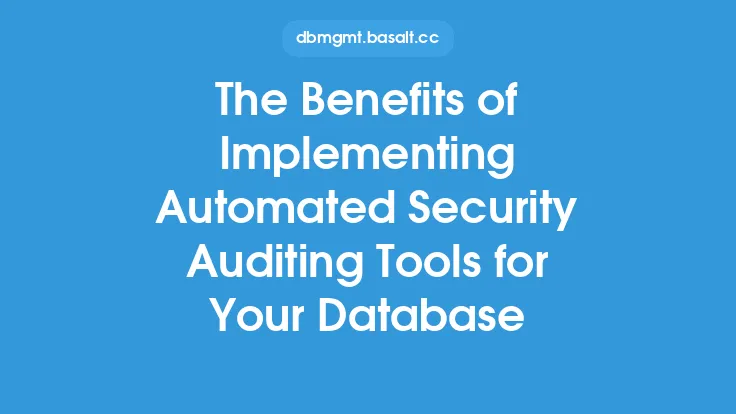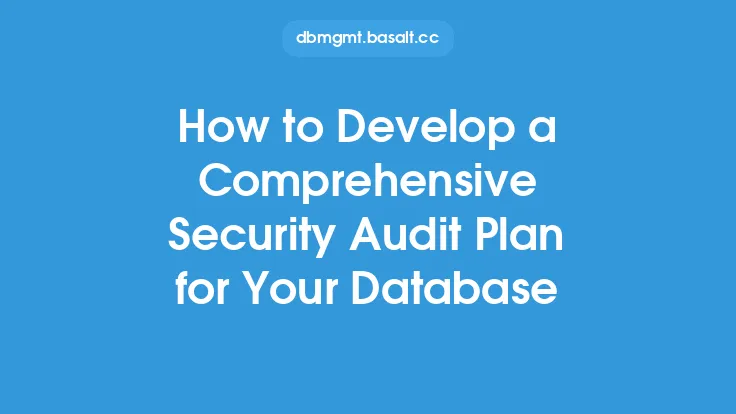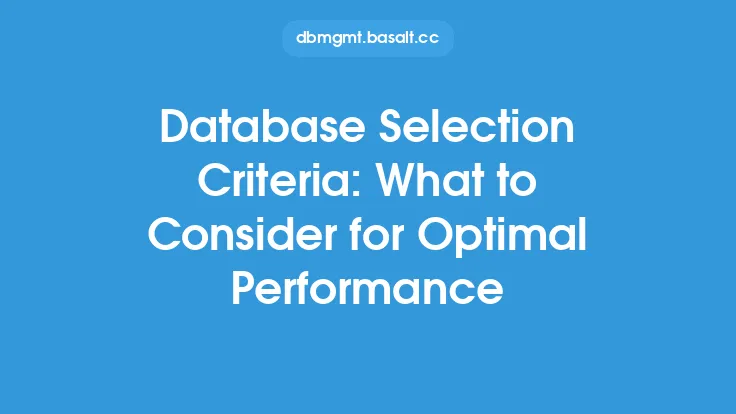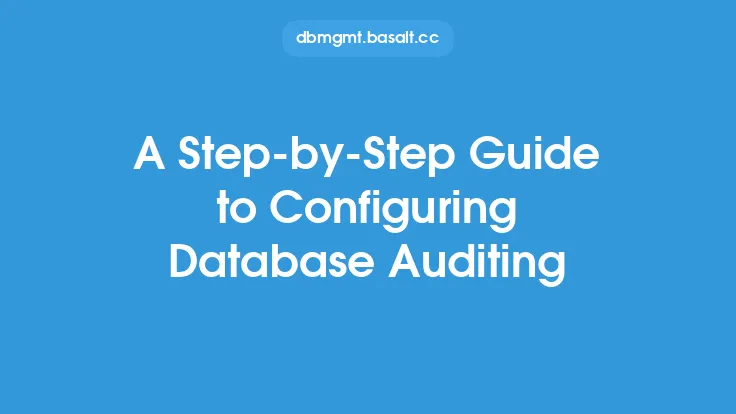Security auditing is a critical component of database compliance, ensuring that an organization's database management system (DBMS) adheres to relevant laws, regulations, and industry standards. Database compliance involves meeting specific requirements for data security, integrity, and availability, which are essential for protecting sensitive information and maintaining trust with customers, partners, and stakeholders. In this article, we will delve into the world of security auditing for database compliance, exploring the key concepts, techniques, and best practices that organizations need to know.
Introduction to Database Compliance
Database compliance is a broad term that encompasses various aspects of database management, including data security, access control, auditing, and reporting. Compliance requirements vary depending on the industry, location, and type of data being stored. For example, organizations that handle credit card information must comply with the Payment Card Industry Data Security Standard (PCI DSS), while those that handle personal health information must comply with the Health Insurance Portability and Accountability Act (HIPAA). Database compliance is not only a legal requirement but also a business imperative, as non-compliance can result in significant fines, reputational damage, and loss of customer trust.
Security Auditing for Database Compliance
Security auditing is a systematic process of evaluating an organization's database management system to ensure that it meets the required compliance standards. A security audit involves a thorough examination of the database's configuration, access controls, data encryption, and other security-related features. The primary goal of a security audit is to identify vulnerabilities, weaknesses, and compliance gaps that could compromise the security and integrity of the database. Security auditors use various techniques, including risk assessments, vulnerability scans, and penetration testing, to evaluate the database's security posture. They also review database logs, configuration files, and other relevant documentation to ensure that the database is properly configured and maintained.
Key Components of a Security Audit
A comprehensive security audit for database compliance involves several key components, including:
- Risk assessment: Identifying potential risks and threats to the database, such as unauthorized access, data breaches, or denial-of-service attacks.
- Vulnerability scanning: Using automated tools to identify vulnerabilities in the database management system, such as unpatched software or weak passwords.
- Penetration testing: Simulating attacks on the database to test its defenses and identify potential entry points for attackers.
- Configuration review: Evaluating the database's configuration to ensure that it meets compliance requirements, such as data encryption and access controls.
- Log analysis: Reviewing database logs to detect suspicious activity, such as unauthorized access or data modifications.
Database Compliance Standards and Regulations
There are various database compliance standards and regulations that organizations must adhere to, depending on their industry and location. Some of the most common standards and regulations include:
- PCI DSS: A set of standards for organizations that handle credit card information, requiring them to implement robust security controls, such as data encryption and access controls.
- HIPAA: A regulation that requires organizations that handle personal health information to implement strict security controls, such as data encryption and access controls.
- General Data Protection Regulation (GDPR): A regulation that requires organizations that handle personal data of EU citizens to implement robust security controls, such as data encryption and access controls.
- Sarbanes-Oxley Act (SOX): A regulation that requires publicly traded companies to implement internal controls, including security controls, to ensure the accuracy and reliability of financial reporting.
Best Practices for Security Auditing
To ensure effective security auditing for database compliance, organizations should follow best practices, such as:
- Regular security audits: Conducting regular security audits to identify vulnerabilities and compliance gaps.
- Automated auditing tools: Using automated auditing tools to streamline the auditing process and reduce manual errors.
- Skilled auditors: Ensuring that security auditors have the necessary skills and expertise to conduct thorough and effective audits.
- Risk-based approach: Adopting a risk-based approach to security auditing, focusing on the most critical vulnerabilities and compliance gaps.
- Continuous monitoring: Continuously monitoring the database's security posture to detect and respond to potential security threats.
Conclusion
Security auditing is a critical component of database compliance, ensuring that an organization's database management system meets the required compliance standards. By understanding the key concepts, techniques, and best practices of security auditing, organizations can ensure the security and integrity of their databases, protect sensitive information, and maintain trust with customers, partners, and stakeholders. Regular security audits, automated auditing tools, skilled auditors, and a risk-based approach are essential for effective security auditing. By prioritizing security auditing and database compliance, organizations can reduce the risk of data breaches, fines, and reputational damage, and ensure the long-term success and sustainability of their business.





